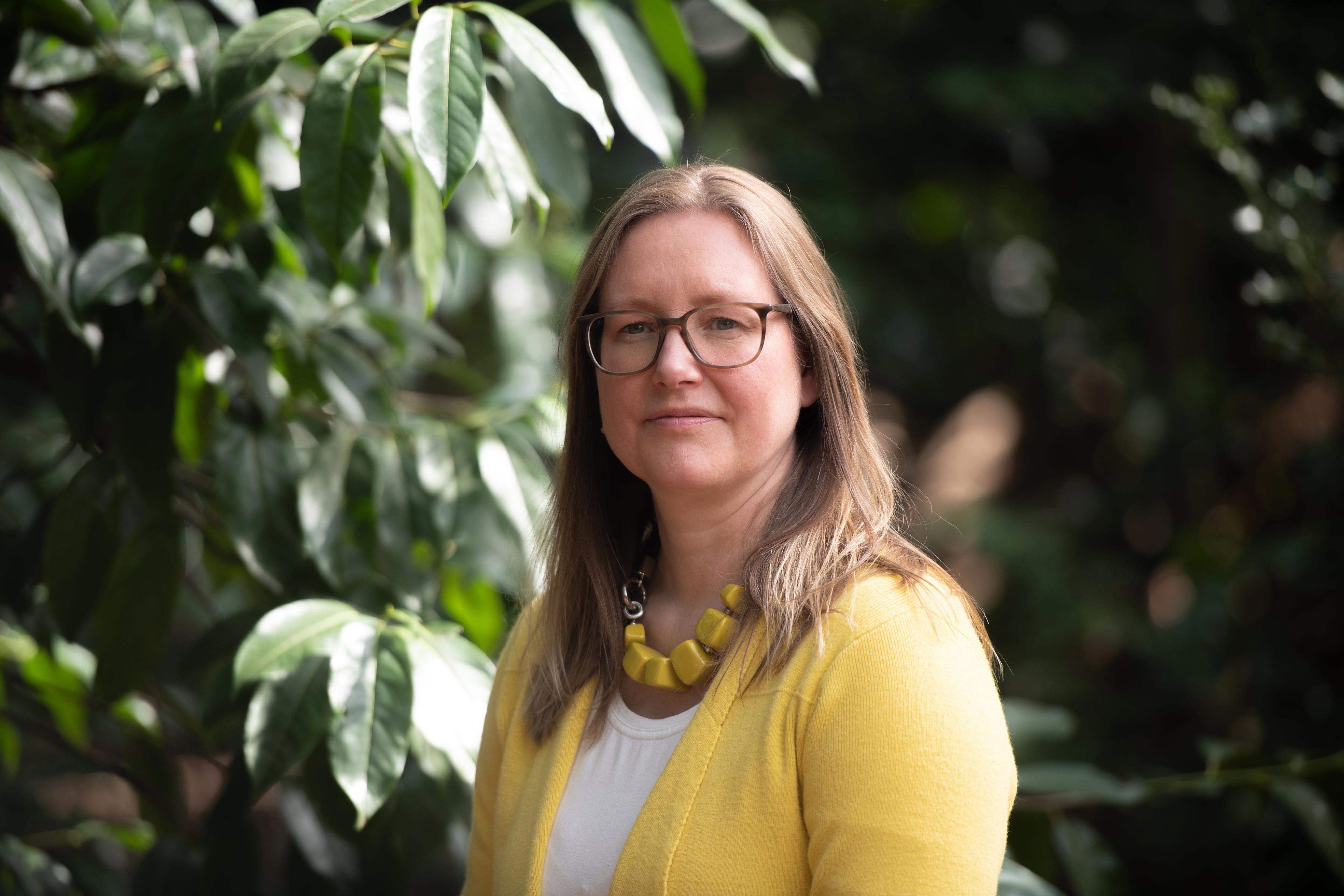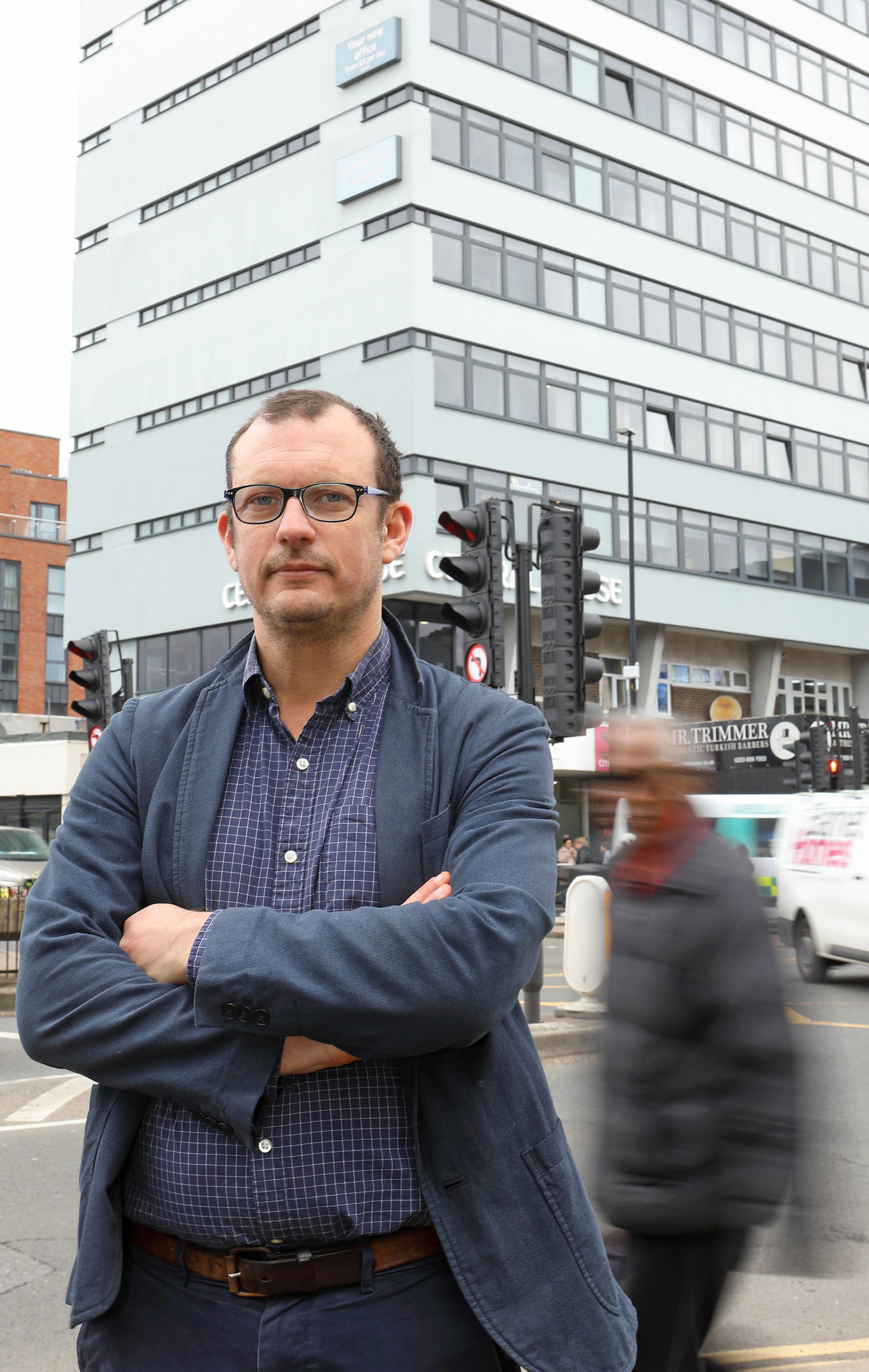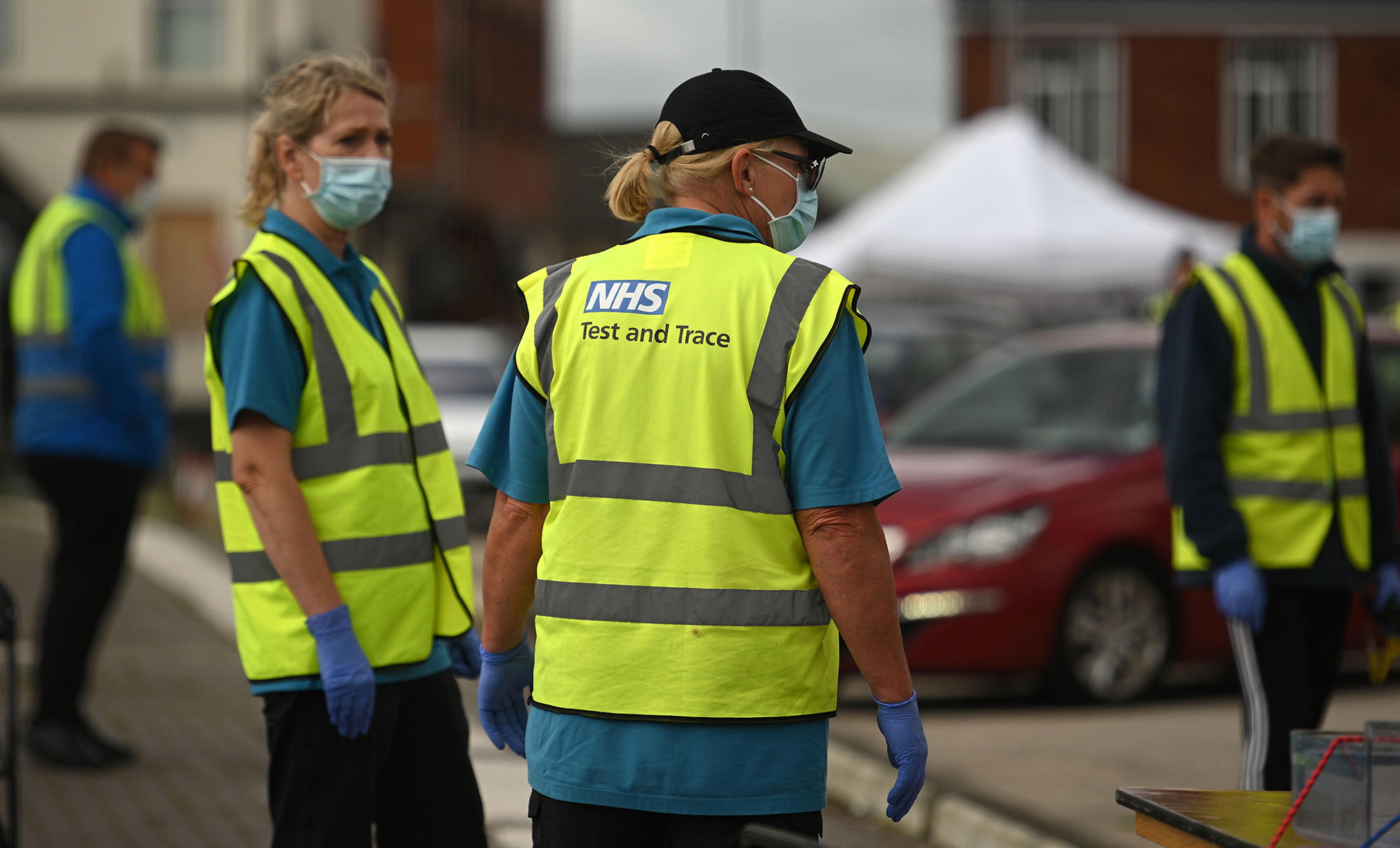Thirty-six alerts arrived on the computer screens of staff at Norfolk County Council during the late afternoon of Friday, 19 March – each alert representing a new COVID-19 case in the area.
The council’s team of data crunchers, contact tracers and outbreak management staff leapt into action in response to this series of messages from the national database. By 6.30pm, 70 per cent of the people who had tested positive had been contacted – with contacts identified and isolation advice and support offered.
A third of the cases were linked to outbreaks in schools and before the weekend even head teachers had been contacted, risk assessments undertaken and action plans put in place.
Six months ago, we found out about outbreaks in schools from social mediaDr Smith
It was a far cry from how the system had worked previously. Prior to that week those alerts would have represented positive results from 48 hours prior – a lag between national and local systems taking away the opportunity to take immediate action and leaving experts with little ability to stop the rampant spread of this disease.
‘The team are really excited and positive,’ the council’s director of public health, Louise Smith, tells The Doctor.
‘They are describing it as a complete game-changer.’
Dr Smith adds: ‘Six months ago, we found out about outbreaks in schools from social media or reading it in the local newspaper. By then the whole community were worried and we were three days late. It makes a big difference.’
It is just one small moment, in one part of the country, in the midst of a gargantuan pandemic response – but it could hardly be more prescient when it comes to an insight into the factors which can break a country’s test and trace programme.
Swift action is undoubtedly important. The value of localism – and particularly local knowledge, expertise and relationships – seems hard to argue against now. The time and understanding to look at outbreaks and put appropriate actions or plans in place is crucial.
And the importance of packages to support those who you ask to isolate is increasingly obvious.
 SMITH: Welcomes move towards localism
SMITH: Welcomes move towards localism
These are qualities that have often been lacking in England’s response to the COVID-19 pandemic. A report published last month did not manage to find any clear evidence that NHS Test and Trace has made a significant difference in reducing the spread of coronavirus.
NHS Test and Trace was originally given a budget of £22bn but has since been handed a further £15bn with the £37bn total covering the first two years of the scheme.
The Parliamentary public accounts committee report said NHS Test and Trace had been set up and staffed at incredible speed but that vast sums had been spent on private consultants – it described this as a ‘persistent reliance’ and urged bosses to ‘wean itself off’ that reliance. It was a brutal assessment.
In mitigation, many doctors and public health experts will explain that the national test and trace has not been a total failure. It is true that Government has achieved significant amounts of capacity and trained a large workforce.
And many directors of public health will testify to the importance of having national involvement in the whole test and trace programme – particularly where the efficiencies of scale are useful. However, the sums are vast – and it is clear that the project has had vast failings.
Perhaps the most damning thing of all, though, is that none of the problems are luxuries of hindsight.
In a feature in the July issue of The Doctor, doctors highlighted the same issues – localism, private sector reliance, the need for public health investment – as are being raised now.
BMA public health committee co-chair Penelope Toff says: ‘One of the problems is the scale of the money that has gone into this and how it has been spent. This money really should have gone into increasing public health capacity, enabling this work to be done locally where it is done most effectively and in supporting people to self-isolate.’
These issues remain of the utmost importance. While the vaccination programme has progressed with good speed and the worst of the first and second waves of the pandemic are becoming memory rather than daily reality, the success of test and trace programmes in England will be crucial to managing this pandemic from now.
The concept of test, trace – and isolate – is, in fact, likely to be more important than ever as society is opened up in the coming weeks and months and with the constant threat of variants mutating to evade the virus looming large.
So, what is the blueprint for a more successful test and trace programme? The Doctor spoke to public health leaders in parts of the UK which have learned lessons and filled the gaps where the national system fails, to find out.
Behavioural model
Public health consultant Jackie Hyland helped to set up the alternative systems to NHS Test and Trace in Northern Ireland and Scotland – having initially begun to work on the COVID pandemic in January 2020 when the situation in China was becoming clearer.
In the very early days of the pandemic Dr Hyland had great clarity about what would be needed – using the health protection outbreak model to create a shadow health protection team, bringing in staff and training them to be able to interview cases, find out who they contacted and look to stop the spread.
It was a difficult situation in which to create the team with many existing professionals struggling to deal with other issues such as outbreaks in care homes, so staff from other backgrounds were brought in to help.
While the English system follows a basic call centre model, Dr Hyland felt that in Northern Ireland it would be important to have as many professionals together in one room – in a bid to ensure the situations of those testing positive are fully investigated and cases could be mapped to places of outbreak. Complex cases are passed to more expert staff.
‘National contact tracing services tend to be less effective – simply calling people and telling them to isolate means you’re not likely to get more information.’
There is still a great focus on how many tests we are doing which totally misses the pointDr Toff
It was a slower process in Scotland but Dr Hyland eventually set up a similar system.
‘Understanding what people are doing is what impacts the spread of infection,’ Dr Hyland says.
‘That helps us to understand. We can then tailor what we do to individuals and groups at local levels – engaging with hard-to-reach communities. This can’t be done at a national level. At the national level it has been all high profile chasing of big numbers and statistics, but it should be about asking what the problem is, what skills have we got and how do we develop systems to respond.’
 STRELITZ: Isolation an issue across the UK
STRELITZ: Isolation an issue across the UK
The experience in Northern Ireland suggests a heavy focus on the terms ‘test’ and ‘trace’ is a big part of the problem – with opportunities for information, understanding and changing behaviour all lost while numbers of tests and contacts traced leads the agenda.
A significant degree of localism appears to be a crucial part of a successful plan – and allows directors of public health to feel in better control of the spread of the disease in their areas.
In Wales there is a partnership between local and national, which according to those involved, has hit the right sort of balance.
The national leaders set policy – for example strategy around symptomatic and asymptomatic cases. But then regional leaders take that strategy and respond however best locally.
Mobile resources
For Kelechi Nnoaham, director of public health in Cwm Taf Morgannwg, it means being able to utilise funding where required – moving testing units to the communities where they are most needed or controlling access to laboratories how he sees fit.
‘That flexibility is absolutely crucial,’ Dr Nnoaham says.
‘The system here means consistency nationally but local expertise and delivery. That is the key strength.’
The East London borough of Newham is one of the parts of the UK which has been hit the hardest by the COVID-19 pandemic. It is a borough with high levels of deprivation, has a very diverse population and a high proportion of people living in crowded housing. Here, the greatest challenge, perhaps, is that many people simply cannot isolate – even if called by the national system.
 A COVID-19 testing centre
A COVID-19 testing centre
Here, council leaders have diverted huge numbers of staff and recruited vast swathes of volunteers to help people in that position. Staff are able to organise food shopping, sometimes even paid for by the council, voluntary services and charities befriend people who are lonely – and the council even has the capacity to pay for people to stay away from their families while isolating.
Newham’s director of public health, Jason Strelitz, says: ‘We should have this in place everywhere. Every part of the country has people who face barriers to isolation.’
These are projects which cost money – but the sums are nothing compared to those being spent nationally. He says £1.5m has been found for the next 12 months for this part of his council’s work.
'But in Newham they would like to do more – more to help the homeless, those with no recourse to public funds, to make sure food poverty isn’t a barrier to isolation and to provide support to immigrants. There are so many infection risks which could be managed.
'One can’t help but hear the lengths local staff have gone to in Newham and wonder what more they could do if only they were the beneficiaries of the vast sums of money now in the bank accounts of firms like Deloitte and Serco.'
Back in Norfolk, Dr Smith explains the importance of a local role in this process with one reflection. ‘Rather sweetly, something like one in four or five people are asking us if we would walk their dog. Something as simple as that can make the difference between someone participating [in isolation] and avoiding further transmission.’
 OUT OF FOCUS: NHS Test and Trace has suffered from a lack of clarity in its aims
OUT OF FOCUS: NHS Test and Trace has suffered from a lack of clarity in its aims
It might sound like a minor issue but the pandemic response in this country has to be founded on positive cases being found – and supported to isolate.
The Government may be able to point to massive amounts of testing capacity and increasingly high numbers of contacts reached, but the reality is that it rarely knows whether people who might be infectious are infecting others or not and that is a monumental flaw in the system.
And beyond £500 support payments – which directors of public health told The Doctor are often incredibly hard to access – little has been done to change this.
One in four or five people are asking us if we would walk their dogsDr Smith
It has been a long time coming but there is a positive trend toward localism in pockets around the country. In Norfolk Dr Smith’s team is taking increasing control of the meat and drink of test, trace and isolation objectives and funding is coming from national emergency pots to pay for that. The same applies to the team in Newham.
And there are other areas too – just last month the London borough of Lambeth took test and trace in-house. There will always be a need for national structures – whether it is for support and flex when local authorities cannot do all the work they need to do, in the running of a national app or for policy and guidance, but it is abundantly clear that the most effective work – away from the misjudged national targets and statistics – is done in local areas by those who know their communities.
Just as the pandemic has shone a light on the dramatic – and tragic – health inequalities in our society it has also shone a light on the importance of well-resourced public health structures, with genuine devolved responsibility.
The trend toward localism is positive, but directors of public health could do even better with more resource – and that means a permanent return of the investment drained out of the system during a decade of austerity.

